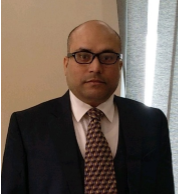
Prof. Pralay Kumar Karmakar
Tezpur University, India
Title: ACOUSTIC MODE STABILITY IN ASTROPHYSICAL QUANTUM PLASMAS
Abstract:
The main
objective of this methodical presentation is to highpoint a theoretic model
formalism, methodologically built up to explore the normal stability
behavioural dynamics of the nucleus-acoustic waves (NAWs), excitable in
astrophysical gyrogravitating degenerate quantum plasma fluids, as in diverse
complex compact astroobjects of white dwarf family. It consists of classically
treated non-degenerate light nuclear species, heavy nuclear species; and quantum-mechanically
treated degenerate lighter electronic species. The hydrodynamic model closure
completes via the non-local long-range gravito-electrostatic interaction
processes [1-2]. The vital incitements of the linear correlative
viscoelasticity and nonlinear electrostatic confinement pressure are conjointly
included. Application of a standard normal spherical mode analysis yields a
generalized linear dispersion relation (septic in polynomial degree). It
depicts the nucleus-originated NAW multiparametric dependency on the plasma
features with no quasi-classic approximation against the customary tradition of
stability analyses [3-5]. It is demonstrated herein that the relative nuclear
charge-mass coupling parameter acts as a destabilizing factor. The ratio of the
charge density of heavy-to-light nuclear species plays as a stabilizing agent
in both the non-relativistic (NR) and ultra-relativistic (UR) regimes. In both
the NR-UR domains, the rotational force introduces a destabilizing influence on
the NAW system. A comparative analysis overview of the findings is presented
and interpreted in light of the different astronomic predictions reported in
the literature extensively [1-2]. We lastly reinforce the exploration to
indicate the asteroseismic applicability of our explorative analyses. It
essentially aims at the insightful physics of diverse wave-instability
characteristic behaviours in complex compact quantum plasmas, mirroring
predominantly the core interiors of diverse compact white dwarfs and comparable
astrostructures in both the realistic NR [1-3] and UR [4-6] regimes. Newfangled
refinements and future directions with more realistic forms of the degenerate electronic
dynamics [1-2] to be appropriately integrated here in the quantum-mechanical
fabric are decisively stated.
References
[1] G. Manfredi, Field
Inst. Commun. Ser. 46, 263 (2005).
[2] D. Koester, Astron. Astrophys. Rev. 11, 33 (2002).
[3] S. Dasgupta, P. K.
Karmakar, Sci. Rep. 11, 19126 (2021).
[4] S. Dasgupta and P. K.
Karmakar, Chinese J. Phys. 76, 299 (2022).
[5]
S. Dasgupta and P. K. Karmakar, J. Astrophys. Astron. 43,
60 (2022).
[6] S. Dasgupta, A. Atteya,
and P. K. Karmakar, Chinese J. Phys. 89, 539 (2023).
Biography:
Dr. Pralay Kumar Karmakar, Professor, Department of Physics, Tezpur University (India), has completed his PhD from Centre of Plasma Physics – Institute for Plasma Research (CPP-IPR), Guwahati, India, under Gauhati University, Assam, India. He has joined Tezpur University as Assistant Professor in the Department of Physics, Tezpur University, Tezpur, India. He has, since then, been widely interested in diversified research and teaching areas, such as Astrophysical plasmas, Cosmic fluid dynamics, Stability analyses of complex media, Nonlinear wave dynamics, Structure formation, Plasma-wall interaction, Gravito-electrostatic sheath, Physics of complex plasmas, Nonlinear plasma theory, Advanced electrodynamics, and so forth. He has successfully completed several awarded research projects, sponsored by Government of India, such as DST, SERB, UGC, etc. He is in the editorial and review board of a number of prestigious international refereed journals. A noteworthy number of active reviewer certificates of honour have been awarded to him. He has good impactful publications in reputed peer-reviewed journals (# 119), book chapters (# 16), proceedings (# 29), etc. He has acted as an invited speaker, keynote speaker, and plenary speaker in a reasonable number of scientific programs both in India and abroad. He has guided a sensibly good number of Research Scholars for PhD, Project Students for Masters, and Interns for Bachelors. He has recently received an award of IUCAA Associateship for executing supported research works in Astronomy in the duration of 2023-26. He is actively associated with several national and international scientific societies of high repute towards promoting science, technology, and academic growth for the mankind globally.